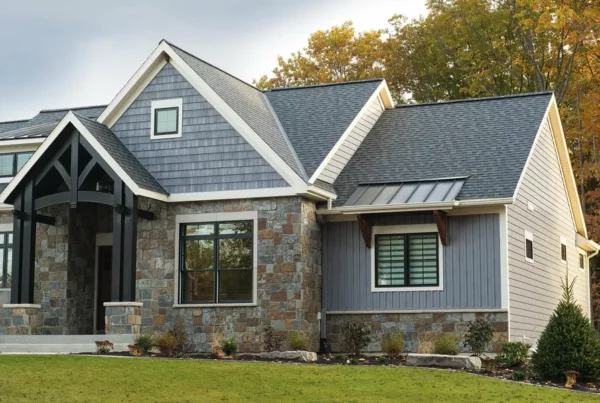The mid-century modern home exterior trend has experienced a remarkable resurgence in recent years, captivating homeowners with its timeless appeal and distinctive design elements. This architectural style, which originated in the mid-20th century, continues to inspire modern-day constructions with its clean lines, organic shapes, and seamless integration with the surrounding environment. In this blog post, we will delve into the driving forces behind the mid-century modern trend, explore the factors that contribute to its popularity, and highlight the most visible design elements that define homes showcasing this captivating style.
The mid-century modern trend has experienced a resurgence due to several key factors. Firstly, its clean, minimalist aesthetic aligns with contemporary design preferences, offering a sense of timelessness and simplicity. Additionally, nostalgia plays a role, as homeowners are drawn to the retro charm and the evocation of a bygone era. The style’s emphasis on functionality, open living spaces, and integration with nature also resonates with modern-day lifestyles, driving its popularity.
Mid-century modern homes feature distinct design elements that contribute to their visual appeal and recognition. Below are some of the most visible factors.
Clean Lines and Organic Shapes
Straight lines, gentle curves, and geometric forms define mid-century modern exteriors. From flat or low-pitched roofs to horizontal siding, like Quality Edge Vesta Steel Siding, these clean lines create a sleek and minimalist appearance.


Abundant Windows
Large windows are a hallmark of mid-century modern design, serving multiple purposes. They bring ample natural light into the interior spaces, provide unobstructed views of the outdoors, and blur the boundaries between indoor and outdoor living. Utilizing exterior panels like Vesta woodgrain siding that carry to the interior, creates continuity between the inside and out, giving a sense of being in both spaces at once.
Integration with Nature
Mid-century modern homes embrace their surroundings by incorporating natural elements. Expansive windows, sliding glass doors, and outdoor living spaces allow residents to enjoy the beauty of the environment and foster a connection to nature.


Use of Natural Materials
Wood, stone, and brick are commonly utilized in mid-century modern exteriors. Whether in the form of exposed beams, accent walls, or stone facades, these materials add warmth, texture, and a sense of authenticity to the overall design. Many homeowners don’t always want the hassle and upkeep that comes with these natural materials and are looking to new products like the Vesta woodgrain profile that provides the same natural aesthetic with a lifetime of performance and no maintenance required.
Statement Entryways
Mid-century modern homes often feature unique and eye-catching entryways. Pivot doors, oversized doors with bold patterns, and even atrium-style entrances create a distinct focal point and make a memorable first impression.


Bold Color Palettes
While mid-century modern homes can be seen in a range of colors, vibrant hues are often used to make a statement. Bright oranges, yellows, blues, and greens create a playful and lively exterior aesthetic.
Timeless Appeal and Contemporary Adaptation
The timeless appeal of mid-century modern design lies in its ability to seamlessly blend retro charm with contemporary adaptations. Today’s homeowners can incorporate modern amenities and sustainable features into mid-century modern homes without compromising the original design principles. From energy-efficient windows and solar panels to smart home technology, these updates ensure that mid-century modern homes remain functional and environmentally conscious.

The mid-century modern home exterior trend continues to captivate homeowners with its unique blend of retro charm and contemporary adaptability. Its clean lines, organic shapes, abundant windows, and integration with nature create an aesthetic that is both visually striking and functional. The resurgence of mid-century modern design can be attributed to its timelessness, minimalistic appeal, and seamless integration with modern lifestyles. By incorporating key design elements and adapting to current needs, mid-century modern homes retain their allure while embracing the best of both past and present.


